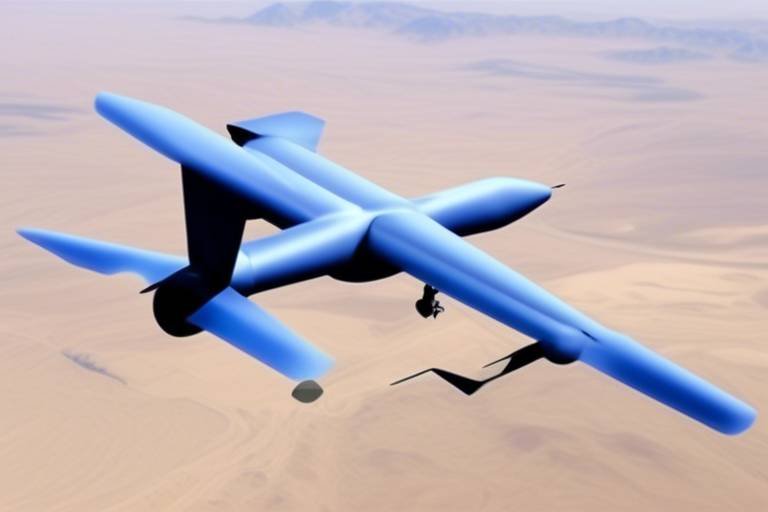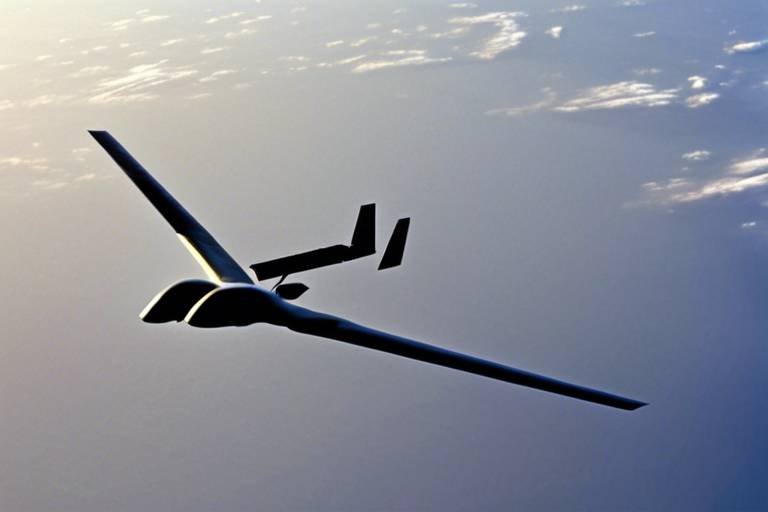How the Robotic Load Carrier is Revolutionizing Logistics
In today's fast-paced world, logistics is the backbone of commerce, and it's undergoing a radical transformation thanks to robotic load carriers. These innovative machines are not just a passing trend; they are reshaping the way goods are transported and managed in warehouses and distribution centers. Imagine a bustling warehouse where goods are moved with the precision of a symphony orchestra, where every note is played flawlessly by robotic carriers, eliminating the chaos of human error and inefficiency. This article delves into how robotic load carriers are enhancing efficiency, slashing costs, and paving the way for a future dominated by automated supply chains.
As we witness the rapid evolution of technology, automation in logistics has become more than a buzzword; it is a game-changer. Companies are increasingly adopting automated solutions to enhance operational efficiency and reduce costs. The driving forces behind this trend include the need for faster delivery times, the demand for accuracy in order fulfillment, and the ongoing labor shortages that many industries face. With the rise of e-commerce, businesses are compelled to find smarter ways to manage their supply chains, and automation is stepping in to fill that gap. The integration of robotic load carriers is a direct response to these challenges, as they streamline processes and allow companies to stay competitive in an ever-evolving market.
The benefits of robotic load carriers are numerous and impactful. They not only increase productivity but also significantly reduce labor costs. Imagine a scenario where you can transport goods across a warehouse without the need for human intervention; that’s the reality with robotic load carriers. Safety is another critical advantage. These machines can operate in environments that may be hazardous for human workers, thereby minimizing workplace accidents. Additionally, they can work around the clock, providing a level of operational continuity that is hard to achieve with a human workforce.
When it comes to efficiency and speed, robotic load carriers shine brightly. By automating the transportation of goods, these machines can move items much faster than any human could. For instance, studies have shown that warehouses employing robotic load carriers can achieve up to a 30% increase in throughput. This is not just a number; it's a significant leap towards optimizing supply chain operations. Companies like Amazon and Walmart are already leveraging these technologies to enhance their logistics capabilities. By automating the movement of goods, they can focus their human resources on tasks that require critical thinking and creativity, further enhancing overall productivity.
Real-world examples abound, illustrating the successful integration of robotic load carriers into logistics operations. For instance, a leading electronics retailer implemented robotic load carriers in their distribution center and reported a 25% reduction in operational costs within the first year. Another case involved a major grocery chain that utilized these machines to transport goods from storage to the packing area, resulting in a 40% decrease in delivery times. Such success stories underscore the potential of robotic load carriers to revolutionize logistics.
When comparing robotic load carriers to traditional logistics methods, the differences are stark. Traditional methods often involve manual labor, which can be prone to errors and inefficiencies. In contrast, robotic load carriers operate with precision and consistency. A
| Aspect | Robotic Load Carriers | Traditional Methods |
|---|---|---|
| Speed | High | Moderate |
| Cost Efficiency | High | Low |
| Labor Dependency | Low | High |
| Safety | High | Moderate |
However, it's essential to recognize that robotic load carriers are not without their challenges. High initial costs can deter companies from making the switch, and integration issues can complicate the transition. Many businesses struggle to align their current systems with new technologies. Nevertheless, potential solutions exist, such as phased implementations and seeking expert guidance to navigate the complexities of automation.
Looking ahead, the future of robotic load carriers is bright. As technology continues to evolve, so too does the potential for these machines. The integration of artificial intelligence (AI) and the Internet of Things (IoT) will further enhance their capabilities. Imagine a world where robotic load carriers can communicate with each other and optimize their routes in real-time, significantly improving efficiency and reducing delays. This is not a distant dream; it's on the horizon.
Emerging technologies are set to revolutionize the logistics landscape. With advancements in AI, robotic load carriers will become smarter, capable of learning from their environments and making autonomous decisions. This will enhance their operational efficiency and adaptability, allowing them to handle more complex tasks and navigate dynamic environments with ease.
The introduction of robotic load carriers will inevitably change workforce dynamics. While some jobs may be displaced, new roles will emerge that require different skill sets. Workers will need to adapt, focusing on tasks that involve oversight, maintenance, and programming of these machines. The future of logistics will not eliminate human workers but rather transform their roles, creating a more skilled workforce that can thrive in an automated environment.
- What are robotic load carriers?
Robotic load carriers are automated machines designed to transport goods within warehouses and distribution centers. - How do robotic load carriers improve efficiency?
They automate the movement of goods, reducing the time and labor required for transportation, leading to increased productivity. - What challenges do companies face when implementing robotic load carriers?
Challenges include high initial costs, integration issues with existing systems, and the need for workforce training. - What is the future of robotic load carriers?
The future looks promising with advancements in AI and IoT, which will enhance their capabilities and operational efficiency.

The Rise of Automation in Logistics
In recent years, the logistics industry has witnessed a dramatic shift towards automation, fundamentally changing how goods are stored, transported, and delivered. This transformation is not just a trend; it’s a response to the growing demands of a fast-paced, global economy where speed and efficiency are paramount. As businesses strive to keep up with consumer expectations for rapid delivery and seamless service, automation has emerged as a key player, enhancing operational efficiency while simultaneously reducing costs.
One of the primary drivers behind this automation wave is the advancement of technology. Innovations in robotics, artificial intelligence, and the Internet of Things (IoT) are enabling companies to streamline their operations like never before. For instance, automated guided vehicles (AGVs) and robotic load carriers are becoming increasingly common in warehouses, allowing for the swift and efficient movement of goods. This technology not only speeds up the process but also minimizes human error, resulting in higher accuracy and reliability in logistics operations.
The logistics sector is also facing increasing pressure to optimize its supply chains. With the rise of e-commerce, companies are required to manage larger volumes of orders and deliver them faster than ever. Automation offers a solution to these challenges by enhancing productivity and ensuring that operations run smoothly. According to recent studies, companies that have adopted automated solutions have reported a 30-50% increase in productivity, a statistic that cannot be ignored in a competitive marketplace.
Furthermore, the adoption of automation is not solely about keeping up with consumer demands; it’s also about cost-effectiveness. Labor costs can take a substantial chunk out of a company's budget, and by integrating robotic systems into their logistics operations, businesses can significantly reduce these expenses. This shift allows companies to allocate resources more efficiently, directing funds towards innovation and growth rather than merely maintaining operational costs.
As we look at the broader picture, the rise of automation in logistics is also influenced by the need for improved safety measures. In traditional warehouses, human workers are often exposed to hazardous conditions, such as heavy lifting and the risk of accidents. Robotic load carriers minimize these risks, taking over the physically demanding tasks and allowing human workers to focus on more strategic roles. This not only enhances workplace safety but also contributes to a more satisfied and productive workforce.
To summarize, the rise of automation in logistics is driven by technological advancements, the need for enhanced productivity, cost reduction, and improved safety measures. As businesses continue to embrace these changes, we can expect to see a logistics landscape that is not only more efficient but also more adaptable to the ever-changing demands of the market.
- What are robotic load carriers? Robotic load carriers are automated vehicles designed to transport goods within warehouses and distribution centers, enhancing efficiency and safety.
- How does automation impact labor in logistics? While automation can reduce the need for manual labor, it also creates new roles that require different skill sets, focusing more on oversight and maintenance of automated systems.
- What are the cost benefits of implementing automation? Automation can lead to significant savings by reducing labor costs, minimizing errors, and increasing overall productivity.
- Are there any challenges associated with automation? Yes, challenges include high initial investment costs, integration with existing systems, and the need for workforce retraining.

Benefits of Robotic Load Carriers
Robotic load carriers are not just a passing trend; they are a revolutionary force in the logistics industry, bringing a plethora of benefits that are hard to ignore. Imagine a world where goods move seamlessly through warehouses, where delays are minimized, and where labor costs are significantly reduced. This is the world that robotic load carriers are creating. They’re designed to improve productivity, enhance safety, and streamline operations, making them an essential component of modern supply chains.
One of the most significant advantages of robotic load carriers is their ability to increase productivity. These machines can operate continuously without the need for breaks, unlike human workers who require rest. By automating the transportation of goods, companies can achieve a level of efficiency that is simply unattainable with traditional methods. For example, in a busy warehouse, a robotic load carrier can transport items from one end to the other in a fraction of the time it would take a human worker. This not only speeds up the process but also allows human employees to focus on more complex tasks that require critical thinking and creativity.
Another compelling benefit is the reduction in labor costs. While the initial investment in robotic load carriers might seem steep, the long-term savings can be substantial. Companies can allocate their workforce to more strategic roles rather than basic transportation tasks. This shift not only cuts down on labor expenses but also allows businesses to invest in training and development, fostering a more skilled workforce. In fact, studies have shown that businesses implementing robotic systems often see a return on investment within just a few years.
Safety is yet another area where robotic load carriers shine. In environments where heavy lifting and repetitive tasks are common, the risk of injury is always a concern. Robotic systems can take over these hazardous tasks, significantly reducing the likelihood of workplace accidents. For instance, a robotic load carrier can navigate through a warehouse, avoiding obstacles and ensuring that goods are transported safely. This not only protects employees but also minimizes potential liability costs for the company.
To illustrate these benefits, let’s take a look at a comparison table showcasing the impact of robotic load carriers vs. traditional methods:
| Aspect | Robotic Load Carriers | Traditional Methods |
|---|---|---|
| Operational Hours | 24/7 | 8-12 hours |
| Labor Costs | Reduced | Higher |
| Risk of Injury | Lower | Higher |
| Speed of Operations | High | Medium |
As we can see, the advantages of robotic load carriers are clear and compelling. They not only enhance efficiency and productivity but also contribute to a safer working environment and reduced costs. The integration of these machines into logistics operations is not merely a trend; it's a fundamental shift in how businesses operate.
Q: What are robotic load carriers?
A: Robotic load carriers are automated machines designed to transport goods within warehouses and distribution centers, enhancing efficiency and reducing reliance on manual labor.
Q: How do robotic load carriers improve safety?
A: By taking over repetitive and heavy lifting tasks, robotic load carriers minimize the risk of workplace injuries, creating a safer environment for human workers.
Q: Are robotic load carriers expensive?
A: While the initial investment can be high, the long-term savings in labor costs and increased productivity often lead to a favorable return on investment.
Q: Can robotic load carriers work alongside human employees?
A: Absolutely! Robotic load carriers are designed to complement human workers, allowing them to focus on more complex tasks while the robots handle the transportation of goods.
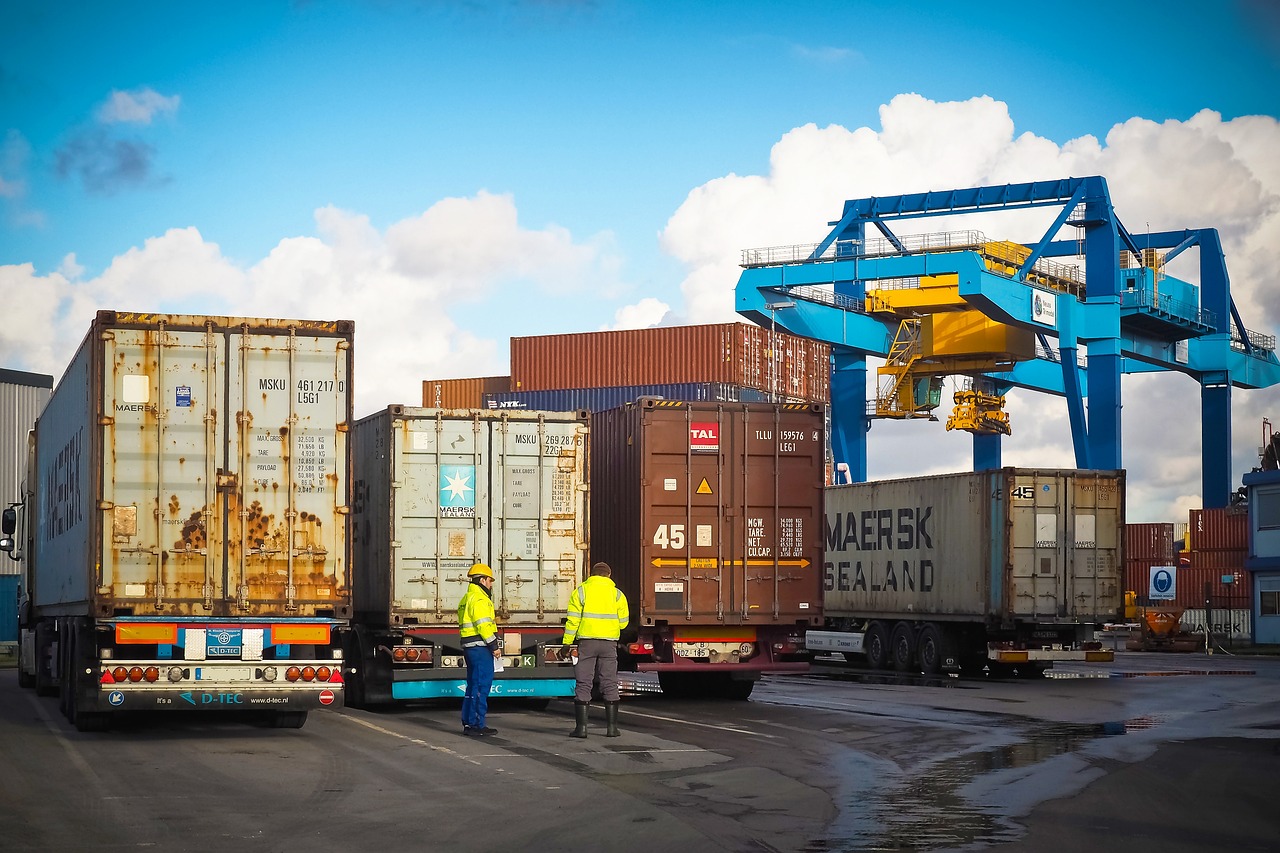
Improved Efficiency and Speed
In the fast-paced world of logistics, the need for efficiency and speed has never been more critical. Robotic load carriers (RLCs) are stepping in like a superhero in a crisis, transforming the way goods are transported within warehouses and across distribution centers. Imagine a bustling warehouse where every second counts; the introduction of RLCs can be likened to adding a turbocharger to an already powerful engine. These automated systems streamline the movement of products, reducing the time taken to transport goods from one point to another.
One of the most impressive aspects of RLCs is their ability to operate continuously, unlike human workers who require breaks and downtime. This constant operation leads to a significant increase in throughput. For instance, a study showed that warehouses employing robotic load carriers could boost their operational speed by up to 30% compared to traditional methods. In a realm where every minute can translate into substantial cost savings, this improvement is nothing short of revolutionary.
Moreover, RLCs are equipped with advanced navigation systems powered by artificial intelligence and machine learning. These technologies allow them to optimize their routes in real-time, avoiding obstacles and recalibrating their paths to ensure the fastest delivery of goods. Think of it as having a GPS that not only tells you the quickest route but also adjusts based on traffic conditions. This dynamic routing capability minimizes delays and maximizes efficiency, offering a competitive edge in an industry where timing is everything.
To illustrate the impact of robotic load carriers on efficiency and speed, let’s take a look at a comparative analysis of traditional methods versus robotic solutions:
| Metric | Traditional Methods | Robotic Load Carriers |
|---|---|---|
| Average Time to Move Goods | 15 minutes | 5 minutes |
| Operational Downtime | 15% | 5% |
| Labor Costs | High | Reduced |
| Throughput Increase | 100 items/hour | 130 items/hour |
As the table illustrates, the efficiency gains from implementing robotic load carriers are not just marginal; they are transformative. Organizations that have adopted these technologies have reported not only faster operations but also a remarkable reduction in labor costs. The result? A more agile, responsive supply chain capable of meeting the demands of modern commerce.
In conclusion, the integration of robotic load carriers into logistics operations represents a significant leap forward in efficiency and speed. By automating the transportation of goods, companies are not just keeping pace with the competition; they are setting the pace for the future. As we continue to explore the benefits of these innovative systems, it’s clear that robotic load carriers are not just a trend—they are a fundamental shift in the logistics landscape.
- What are robotic load carriers? Robotic load carriers are automated vehicles designed to transport goods within warehouses and distribution centers.
- How do robotic load carriers improve efficiency? They operate continuously, optimize routes using AI, and significantly reduce the time needed to move goods.
- Are there any downsides to using robotic load carriers? Yes, initial costs can be high, and there may be challenges related to integration with existing systems.
- What industries benefit most from robotic load carriers? Industries such as e-commerce, manufacturing, and food distribution see substantial benefits from RLCs.
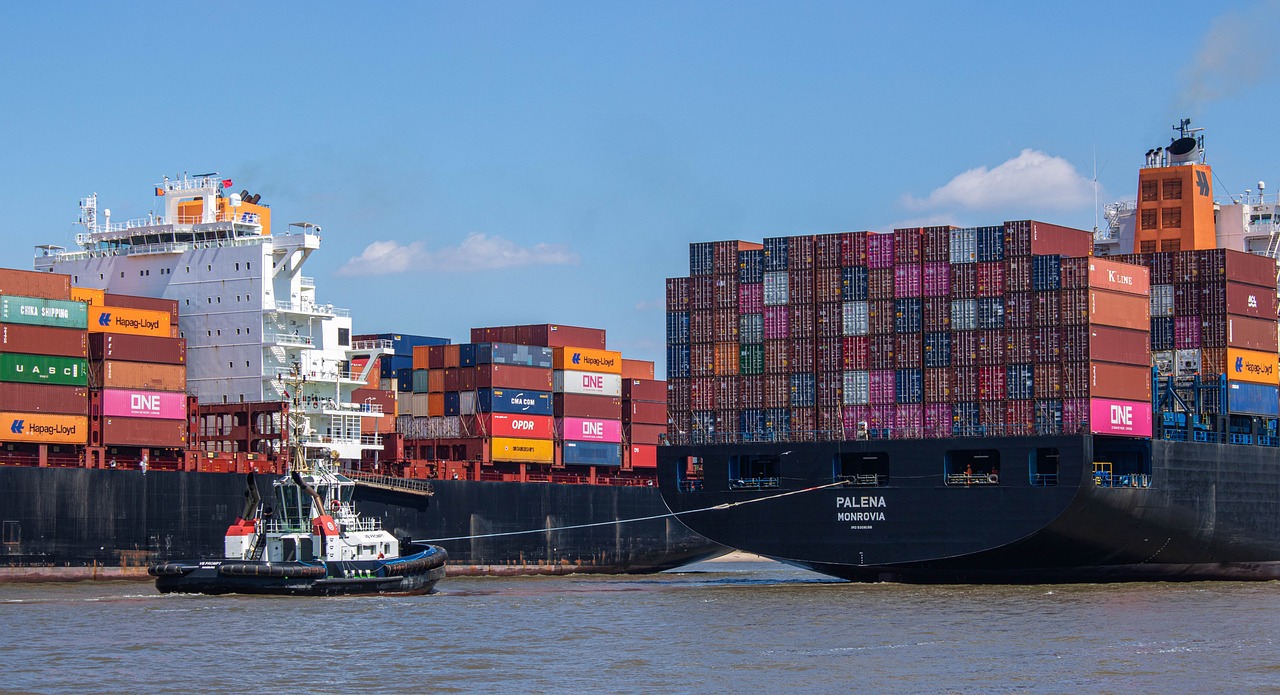
Case Studies of Successful Implementations
The integration of robotic load carriers into logistics operations is not just a concept; it has become a reality for many companies around the globe. These case studies illustrate the tangible benefits and efficiencies gained through the adoption of robotic technologies. One notable example is Amazon, which has revolutionized its warehousing processes with the introduction of Kiva robots. These robots can transport shelves of products directly to human workers, significantly reducing the time spent walking and searching for items. In fact, Amazon reported a 20% increase in productivity after implementing this system, showcasing how automation can streamline operations.
Another impressive case is that of DHL, which has employed robotic load carriers in its European warehouses. By utilizing autonomous mobile robots (AMRs), DHL has managed to automate the transport of goods across its facilities. This change has resulted in a 30% reduction in operational costs and a remarkable increase in order fulfillment speed. The robots work alongside human workers, allowing for a collaborative environment where both can thrive. This partnership between man and machine is a clear indication of how robotic load carriers can enhance efficiency while maintaining a human touch.
Furthermore, a manufacturing company called Ford has also adopted robotic load carriers in its assembly lines. By integrating these carriers, Ford has streamlined the delivery of components to various stations, cutting down on delays and improving the overall production flow. The implementation led to a 15% decrease in production time, which not only boosts output but also contributes to significant cost savings. This case exemplifies how robotic load carriers can be utilized beyond warehousing, impacting manufacturing processes positively.
To summarize, these case studies highlight the transformative power of robotic load carriers in logistics and manufacturing. The measurable gains in efficiency, cost savings, and productivity are compelling reasons for companies to consider these technologies. As we move forward, it's clear that the future of logistics will be shaped by such innovations, leading to a more agile and responsive supply chain.
- What are robotic load carriers?
Robotic load carriers are automated machines designed to transport goods within warehouses or manufacturing facilities, improving efficiency and reducing the need for manual labor.
- How do robotic load carriers improve efficiency?
They automate the movement of goods, allowing for faster transportation and reducing the time workers spend on tasks like searching for items or moving products manually.
- What industries benefit from robotic load carriers?
Industries such as e-commerce, manufacturing, and retail have seen significant benefits from the adoption of robotic load carriers, enhancing their operational efficiency.
- Are there any challenges in implementing robotic load carriers?
Yes, challenges include high initial costs, integration with existing systems, and the need for employee training. However, the long-term benefits often outweigh these initial hurdles.

Comparative Analysis with Traditional Methods
When we think about the logistics industry, traditional methods often come to mind. These methods, while reliable, have their limitations. Robotic load carriers (RLCs) are shaking things up, and a comparative analysis reveals some striking differences. Traditional logistics often relies on manual labor, which can be slow and prone to human error. Just imagine a bustling warehouse where workers are moving goods around on pallets, navigating through tight spaces, and sometimes misplacing items. It’s a chaotic scene, and while it gets the job done, it’s not the most efficient way to operate.
On the other hand, robotic load carriers streamline this process. They are designed to transport goods autonomously, significantly reducing the time spent on manual handling. For instance, while a human worker might take several minutes to move a load from one point to another, an RLC can accomplish the same task in a fraction of that time. This leap in speed not only boosts productivity but also allows human workers to focus on more complex tasks that require critical thinking and decision-making.
To put this into perspective, let’s look at a table comparing key metrics between traditional methods and robotic load carriers:
| Metric | Traditional Methods | Robotic Load Carriers |
|---|---|---|
| Time to Move Goods | 5-10 minutes | 1-2 minutes |
| Labor Costs | High | Lower due to reduced labor needs |
| Error Rate | 5-10% | Less than 1% |
| Operational Downtime | High (due to breaks, shifts) | Minimal (24/7 operation) |
This table highlights the clear advantages of robotic load carriers over traditional methods. The reduction in time to move goods is particularly striking. Think about it: less time spent on transportation means faster order fulfillment, which can lead to happier customers. In a world where instant gratification is the norm, that’s a significant edge for businesses.
Moreover, the cost implications are profound. While the initial investment in robotic load carriers might seem steep, the long-term savings in labor costs and reduced error rates make them a financially sound choice. Companies can save thousands, if not millions, by minimizing mistakes and optimizing their workforce.
However, it’s important to note that traditional methods still have their place. For instance, in smaller operations or niche markets where the volume of goods is lower, the cost of implementing robotic systems may not be justified. But as the demand for efficiency and speed grows, it’s clear that robotic load carriers are paving the way for a new era in logistics.
In conclusion, the comparative analysis between traditional methods and robotic load carriers reveals a clear trend: as technology advances, the logistics industry must adapt or risk falling behind. The future is automated, and those who embrace it will likely see significant benefits.
- What are robotic load carriers? - Robotic load carriers are automated systems designed to transport goods within warehouses and distribution centers without human intervention.
- How do robotic load carriers improve efficiency? - They reduce the time taken to move goods, minimize human error, and allow human workers to focus on more complex tasks.
- Are robotic load carriers expensive? - While the initial investment can be high, the long-term savings in labor and operational costs often outweigh the upfront costs.
- Can small businesses benefit from robotic load carriers? - Yes, but it depends on the volume of goods and specific operational needs. Smaller businesses may find it beneficial as they scale.

Challenges and Limitations
While robotic load carriers are making waves in the logistics industry, it’s essential to acknowledge that they come with their own set of . One of the most significant hurdles is the high initial investment required for implementation. Companies looking to integrate these advanced systems must be prepared to spend a considerable amount on purchasing equipment, software, and necessary infrastructure upgrades. This upfront cost can be daunting, particularly for smaller businesses, which might hesitate to embrace automation due to budget constraints.
Another challenge is the integration with existing systems. Many companies have established logistics processes that rely on traditional methods. Transitioning to robotic load carriers often requires a complete overhaul of these systems, which can be both time-consuming and costly. The integration process may also lead to temporary disruptions in operations, which can result in lost productivity and revenue.
Moreover, there’s the issue of technical skills. As these robotic systems become more sophisticated, the demand for personnel with the right technical skills increases. Employees must be trained not only to operate these machines but also to troubleshoot and maintain them. This requirement can create a skills gap, leading to potential labor shortages in a field that is already experiencing rapid changes.
Additionally, while robotic load carriers enhance efficiency, they are not immune to operational limitations. For instance, these machines can struggle in unpredictable environments or when handling complex tasks that require human judgment. Factors such as navigating crowded spaces or adapting to sudden changes in inventory can pose significant challenges. In such scenarios, human intervention remains crucial.
Furthermore, there is a growing concern regarding the impact on employment. As companies adopt robotic solutions, there is a fear that jobs may be lost. While automation can lead to increased productivity, it can also result in reduced labor demand for certain roles. This shift necessitates a careful balance to ensure that human workers are not left behind in the transition to a more automated workforce.
In summary, while robotic load carriers present exciting opportunities for the logistics industry, addressing these challenges is vital for successful implementation. Companies must weigh the benefits against the limitations and devise strategies to mitigate these issues effectively.
- What is a robotic load carrier?
A robotic load carrier is an automated vehicle designed to transport goods within warehouses and distribution centers, enhancing efficiency in logistics operations. - What are the main challenges of implementing robotic load carriers?
The main challenges include high initial costs, integration with existing systems, the need for technical skills, operational limitations, and potential impacts on employment. - How can companies overcome the challenges of robotic load carriers?
Companies can invest in training programs, gradually integrate robotic solutions, and conduct thorough cost-benefit analyses to ensure a smooth transition. - Will robotic load carriers replace human workers?
While robotic load carriers can automate certain tasks, they are intended to complement human workers, not completely replace them. The focus will shift towards more skilled roles in logistics.

The Future of Robotic Load Carriers
The future of robotic load carriers (RLCs) is not just bright; it's practically glowing with potential! As we stand on the brink of a technological revolution in logistics, these innovative machines are set to redefine the way goods are transported and managed within supply chains. Imagine a world where goods move seamlessly from one point to another with minimal human intervention. Sounds like science fiction, right? But it's happening right now, and it’s only going to get better.
With advancements in technology, particularly in artificial intelligence (AI) and the Internet of Things (IoT), the capabilities of robotic load carriers are expected to expand exponentially. AI will enable these machines to learn from their environments, make real-time decisions, and optimize their routes to ensure maximum efficiency. Meanwhile, IoT will allow for better communication between RLCs and other systems, creating a more integrated and responsive logistics network. It’s like giving these machines a brain and a nervous system!
Let’s delve into some of the exciting innovations on the horizon:
- Autonomous Navigation: Future RLCs will likely feature advanced sensors and mapping technologies that allow them to navigate complex environments without human oversight. Picture a warehouse where these carriers zip around like busy bees, avoiding obstacles and optimizing their paths in real-time.
- Enhanced Load Management: With smarter load management systems, RLCs will be able to handle a wider variety of goods and adapt to different load types, ensuring that even the most fragile items are transported safely.
- Energy Efficiency: As sustainability becomes a pressing concern, future robotic load carriers will likely incorporate energy-efficient technologies, such as solar power or regenerative braking systems, to minimize their environmental impact.
However, the rise of robotic load carriers doesn't come without its challenges. One of the most significant concerns is the impact on the workforce. As these machines become more prevalent, what happens to the human workers who traditionally perform these tasks? While some fear job losses, others see a shift in roles. The integration of RLCs will require a workforce that is skilled in managing and maintaining these advanced systems. This means that educational programs and training will need to evolve, focusing on technology and robotics.
In conclusion, the future of robotic load carriers is not just about automation; it’s about creating a more efficient, responsive, and sustainable logistics network. As we embrace these advancements, we must also consider the implications for our workforce and ensure that we are preparing for the changes ahead. The logistics industry is on the verge of a transformation that could change the way we think about supply chains forever!
Q: What are robotic load carriers?
A: Robotic load carriers are automated machines designed to transport goods within warehouses and distribution centers, enhancing efficiency and reducing the need for manual labor.
Q: How do robotic load carriers improve efficiency?
A: They utilize advanced navigation systems and AI to optimize routes, reduce transit times, and minimize human error, resulting in faster and more reliable operations.
Q: Will robotic load carriers replace human workers?
A: While RLCs may automate certain tasks, they will also create new job opportunities focused on managing and maintaining these technologies.
Q: What is the role of AI in robotic load carriers?
A: AI enables RLCs to learn from their environment, make decisions in real-time, and adapt to changing conditions, enhancing their operational capabilities.
Q: How can companies prepare for the integration of robotic load carriers?
A: Companies should invest in training their workforce to handle new technologies and consider gradual implementation strategies to ease the transition.
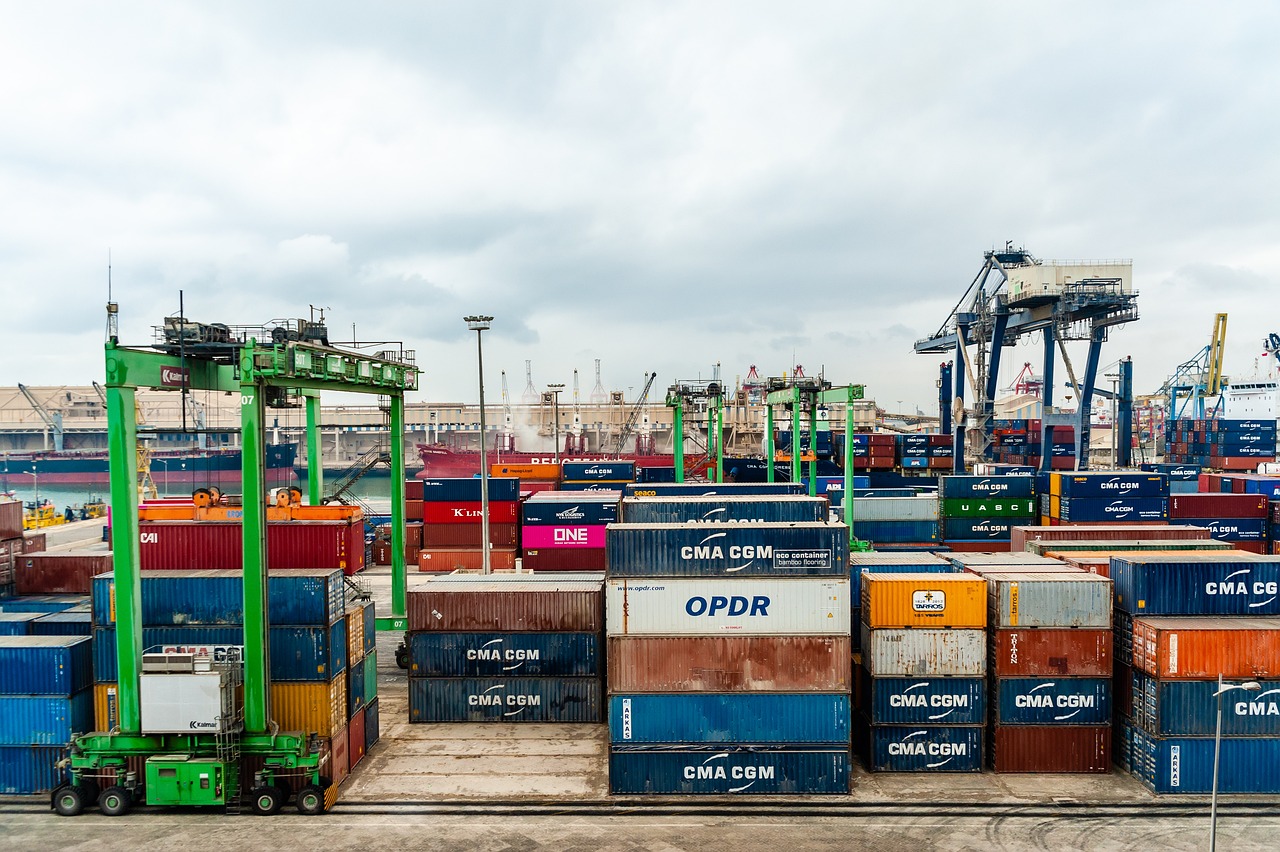
Technological Innovations on the Horizon
The logistics industry is on the brink of a technological renaissance, and robotic load carriers are at the forefront of this evolution. As we look toward the future, it’s impossible to ignore the potential of emerging technologies like Artificial Intelligence (AI), Internet of Things (IoT), and machine learning to enhance the capabilities of these automated systems. Imagine a world where robotic load carriers not only transport goods but also analyze their surroundings, predict maintenance needs, and communicate with other machines in real-time. This is not science fiction; it’s the future of logistics!
One of the most exciting innovations on the horizon is the integration of AI algorithms that allow robotic load carriers to make decisions based on real-time data. For instance, these robots could optimize their routes based on traffic patterns, weather conditions, and even the current workload of the warehouse. This kind of adaptability can lead to significant time savings and a reduction in operational costs. Picture a robotic carrier that can reroute itself to avoid congested areas, ensuring timely deliveries without human intervention. The efficiency gains here are staggering!
Moreover, the IoT is set to revolutionize how robotic load carriers interact with their environment. With sensors embedded in every corner of a warehouse, these robots will be able to communicate not just with each other but also with other systems in place. For example, if a robotic load carrier detects a malfunction in a conveyor belt, it can instantly alert maintenance personnel and even suggest a temporary workaround, minimizing downtime. This interconnectedness creates a seamless operational flow that is both efficient and responsive.
Another critical advancement will be the development of autonomous navigation systems. Current robotic load carriers often rely on predefined paths or require human oversight. However, future innovations will enable these machines to navigate complex environments autonomously. They will utilize advanced computer vision and sensor fusion technologies to assess their surroundings, identify obstacles, and make real-time adjustments. This level of autonomy not only enhances efficiency but also reduces the need for extensive human supervision.
To illustrate the potential impact of these innovations, consider the following table that outlines the expected advancements and their implications:
| Innovation | Expected Impact |
|---|---|
| AI Algorithms | Improved decision-making and route optimization |
| IoT Integration | Enhanced communication and operational efficiency |
| Autonomous Navigation | Reduced need for human oversight and increased safety |
As we can see, the implications of these technological advancements are profound. They promise not only to enhance productivity but also to create a safer and more efficient working environment. However, with great power comes great responsibility. The logistics industry must also consider the ethical implications of deploying such advanced technologies. How will this affect the workforce? What measures will be put in place to ensure that these innovations are used for the greater good? These are questions that need thoughtful consideration as we move forward.
In conclusion, the future of robotic load carriers is bright and filled with potential. With the integration of AI, IoT, and advanced navigation systems, we are on the cusp of a logistics revolution that will redefine how goods are transported and managed. The key is to embrace these technologies while also addressing the challenges and ethical considerations that come with them.
- What are robotic load carriers?
Robotic load carriers are automated machines designed to transport goods within warehouses and logistics centers. - How does AI improve robotic load carriers?
AI enables robotic load carriers to make real-time decisions, optimizing routes and improving efficiency. - What role does IoT play in logistics?
The IoT allows for seamless communication between machines, enhancing operational efficiency and responsiveness. - Are there any challenges with robotic load carriers?
Yes, challenges include high initial costs and the need for integration with existing systems.

Impact on Workforce Dynamics
The introduction of robotic load carriers in logistics is not just a technological shift; it's a seismic change that reverberates throughout the workforce. Imagine a bustling warehouse where human workers and robots collaborate seamlessly, much like a well-orchestrated symphony. While this innovation brings about remarkable efficiency, it also poses questions about the future roles of human employees in this evolving landscape. Are we heading towards a world where robots replace human jobs, or is there a more collaborative future awaiting us?
First and foremost, it's essential to recognize that robotic load carriers are not here to completely eliminate human jobs. Instead, they are designed to take over repetitive and physically demanding tasks, allowing human workers to focus on more complex and strategic roles. For instance, while robots transport goods from one point to another, humans can concentrate on tasks that require critical thinking, problem-solving, and customer interaction. This shift can lead to a more fulfilling work experience, where employees are engaged in meaningful activities rather than mundane chores.
However, this transition does not come without its challenges. As companies adopt these advanced technologies, there will be a growing need for workers to adapt to new skill requirements. The workforce will need to be retrained to operate and maintain these robotic systems effectively. This leads us to a crucial question: how can organizations ensure that their employees are equipped for this new reality? Training programs must evolve to include not only technical skills but also soft skills that emphasize teamwork and collaboration between humans and machines.
To further illustrate the impact, consider the following table that outlines the changing roles within the logistics sector:
| Traditional Role | Emerging Role |
|---|---|
| Manual Laborer | Robot Operator |
| Warehouse Picker | Inventory Analyst |
| Delivery Driver | Logistics Coordinator |
As illustrated, the shift from traditional roles to emerging roles not only highlights the need for new skills but also emphasizes the importance of adaptability in the workplace. Employees must be open to learning and evolving alongside technology. This adaptability could be the key to thriving in a future where robotic load carriers are commonplace.
Moreover, the integration of robotic load carriers can foster a new culture of safety and efficiency in the workplace. With robots handling heavy loads, the risk of workplace injuries can significantly decrease. This not only benefits the employees but also the organizations, as a safer workplace translates to lower insurance costs and fewer days lost to injury. However, this doesn't mean that human oversight is no longer necessary; rather, it becomes more crucial than ever to ensure that both humans and robots are working in harmony.
In conclusion, the impact of robotic load carriers on workforce dynamics is profound. While they may change the nature of jobs, they also open up opportunities for growth, innovation, and improved working conditions. The future of logistics is not about replacing humans but enhancing their roles, creating a collaborative environment where technology and human ingenuity can thrive together.
- Will robotic load carriers replace all human jobs in logistics? No, they are designed to complement human workers by taking over repetitive tasks, allowing humans to focus on more complex roles.
- What skills will be needed in the future workforce? Skills in technology, critical thinking, and teamwork will become increasingly important as workers adapt to new roles alongside robotic systems.
- How can companies prepare their workforce for this change? Organizations can invest in training programs that focus on both technical and soft skills to ensure employees are equipped for the future.
Frequently Asked Questions
- What are robotic load carriers?
Robotic load carriers are automated machines designed to transport goods within warehouses and distribution centers. They can navigate autonomously, reducing the need for human intervention and streamlining the logistics process.
- How do robotic load carriers improve efficiency in logistics?
These carriers enhance efficiency by automating the movement of goods, which speeds up operations. They can work around the clock without breaks, leading to faster turnaround times and increased productivity.
- What are the cost benefits of using robotic load carriers?
While the initial investment may be high, robotic load carriers can significantly reduce labor costs and operational expenses over time. They minimize human error and improve inventory management, leading to long-term savings.
- Are there any challenges associated with implementing robotic load carriers?
Yes, challenges include high upfront costs, the need for infrastructure upgrades, and potential integration issues with existing systems. However, many companies find that the long-term benefits outweigh these initial hurdles.
- How do robotic load carriers affect the workforce?
The introduction of these machines may lead to shifts in workforce dynamics, as some jobs may be automated. However, they also create opportunities for new roles focused on managing and maintaining these technologies.
- What technologies are enhancing robotic load carriers?
Emerging technologies like artificial intelligence (AI) and the Internet of Things (IoT) are set to enhance the capabilities of robotic load carriers, allowing for smarter navigation, better inventory tracking, and improved decision-making processes.
- Can robotic load carriers operate in all types of environments?
While they are highly adaptable, the effectiveness of robotic load carriers can depend on the specific environment. Factors like space constraints, layout complexity, and the type of goods being transported can influence their performance.
- What industries can benefit from robotic load carriers?
Robotic load carriers are beneficial across various industries, including e-commerce, manufacturing, retail, and healthcare. Any sector that requires efficient movement of goods can take advantage of these innovative solutions.



